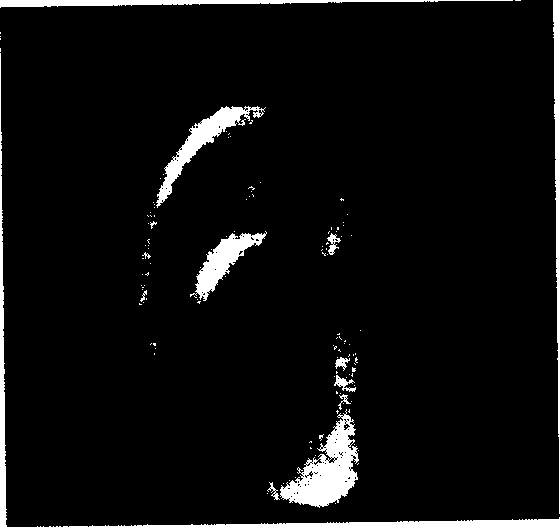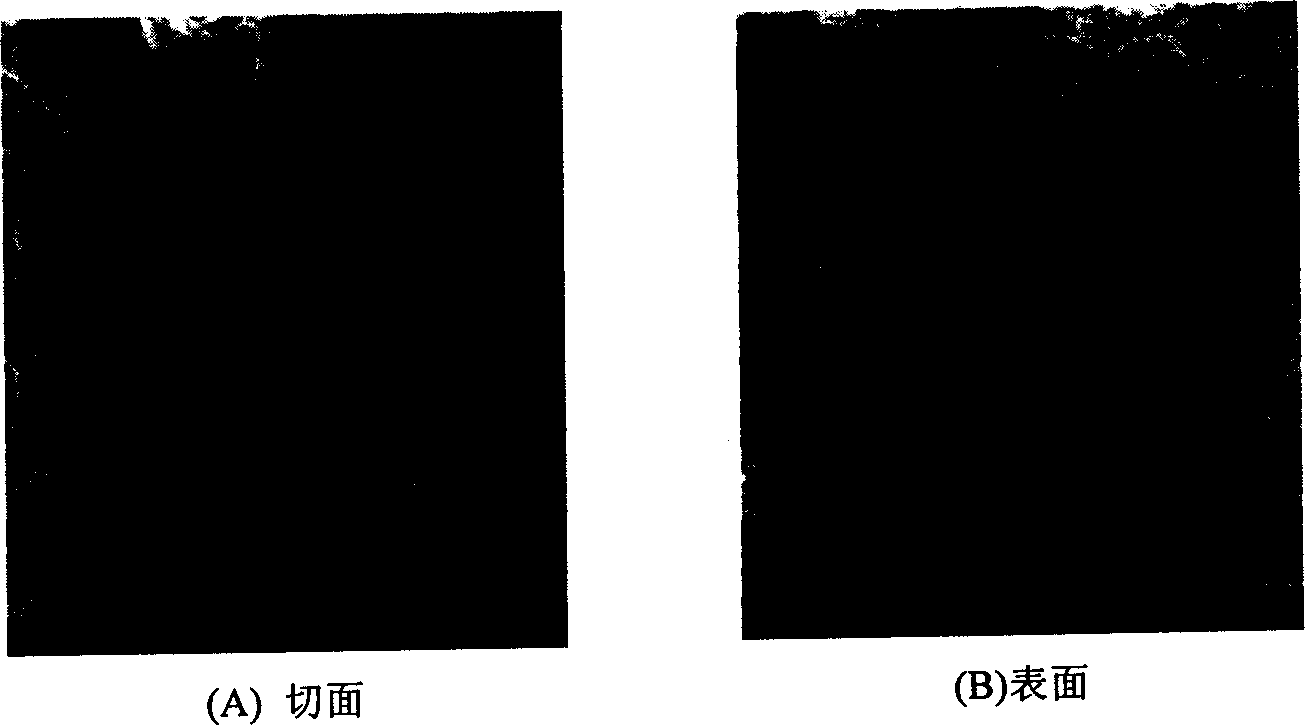High-molecule porous scaffold for tissue engineering and its preparing process by hot pressing
A porous scaffold and tissue engineering technology, applied in the fields of biomedical engineering and polymer materials, can solve the problems of low pore density, difficult solvent volatilization and demoulding, unfavorable transport of cell nutrients and metabolites, etc. The effect of good shape retention
- Summary
- Abstract
- Description
- Claims
- Application Information
AI Technical Summary
Problems solved by technology
Method used
Image
Examples
Embodiment 1
[0048] Example 1 First, make a human ear model with gypsum, put it into a copper mold box, and pad the bottom flat; mix the silicone rubber main agent and curing agent in a ratio of 10 grams: 0.68 grams, then fill it into the mold box, and compact it , cured at room temperature for 5 minutes, demolded to obtain a flexible mold A (female mold A); put the female mold A into the mold box, and then put the human ear model, repeat the above process to obtain the female mold B; at the same time, design and process Copper rigid mould, so that flexible mold can just be put into rigid mould; 0.3 gram of viscosity-average molecular weight is 55000 PCL is dissolved in the chloroform solution that forms PCL in 6 gram of chloroforms, the sodium chloride porogen particle is sieved, take Add 2.7 grams of sodium chloride particles with a particle size of 280-450 μm into the solution (the amount of sodium chloride accounts for 90% of the total weight of polymer PCL and sodium chloride), stir ev...
Embodiment 2
[0049] Example 2 The amount of PCL used is 0.15 g, the amount of chloroform used is 6 g, the amount of sodium chloride particles is 2.85 g, and the others are the same as in Example 1. A PCL porous scaffold with a complex shape of the human ear was obtained with a porosity of 92.9%, highly connected pores, and a high pore density on the scaffold surface.
Embodiment 3
[0050]Example 3 The polymer used is PDLLA with a viscosity-average molecular weight of 41,000, the dosage is 0.45 g, the dosage of chloroform is 6 grams, the dosage of sodium chloride particles is 2.55 grams, and the hot pressing temperature is 120°C. Others are with embodiment 1. A PDLLA porous scaffold with a complex shape of the human ear was obtained with a porosity of 78.9%, highly interconnected pores, and a high pore density on the scaffold surface.
PUM
| Property | Measurement | Unit |
|---|---|---|
| size | aaaaa | aaaaa |
| particle diameter | aaaaa | aaaaa |
| porosity | aaaaa | aaaaa |
Abstract
Description
Claims
Application Information
 Login to View More
Login to View More - R&D
- Intellectual Property
- Life Sciences
- Materials
- Tech Scout
- Unparalleled Data Quality
- Higher Quality Content
- 60% Fewer Hallucinations
Browse by: Latest US Patents, China's latest patents, Technical Efficacy Thesaurus, Application Domain, Technology Topic, Popular Technical Reports.
© 2025 PatSnap. All rights reserved.Legal|Privacy policy|Modern Slavery Act Transparency Statement|Sitemap|About US| Contact US: help@patsnap.com


